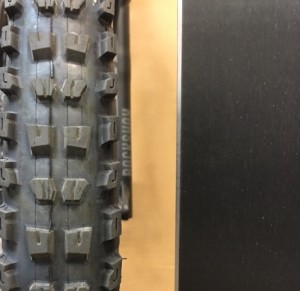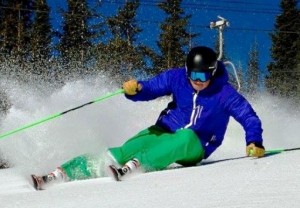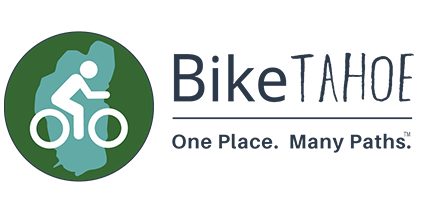Biking and Skiing share common attributes.
For well over 125 years, biking has been a cross-training activity for skiers, and ski instructors are often heard telling their students that “skiing is like riding a bicycle”. Why is that? Let’s take a look at the similarities between biking and skiing, and you too may have a better understanding and appreciation of the unique attributes these two popular activities have in common.
Biking and skiing share three fundamental elements: the mountain environment, equipment supporting the body, and the body using equipment to maneuver and control speed.
Mountain. The mountain environment is a place where the skier and biker (particularly mountain biker) must negotiate varying degrees of steepness, undulating terrain, variable surface conditions, obstacles, and gravity.
Equipment. Bikes and skis share some common features to support the rider and enable him/her to maneuver and control speed.
- Stable Platform. A stable longitudinal (length) platform supports the rider. The wheel base length of a bike is about 4 feet and for skis 4 to 6 feet.
- Absorption. Skis have flex, camber, and energy (vibration) absorbing construction built into them; and bikes have air filled tires, and some have carbon fiber and suspension systems to absorb vibration and irregular terrain surfaces.
- Edge. The edge is everything in skiing as it cuts into the snow to control our speed and helps in changing directions. This is also true for the bicycle. The bike’s edge is located on the tire and is most obviously seen by the ridge of knobs along the side of mountain bike tires.
 Body. The biking and skiing athlete share a lot of common attributes and tactics while powered by gravity and riding on equipment. Here are ten:
Body. The biking and skiing athlete share a lot of common attributes and tactics while powered by gravity and riding on equipment. Here are ten:
- Balance. Aligning your upper body mass over your hips and feet promotes ease and efficiency of movement, and effective power transmission to the bike and skis.
- Pressure. A key shared skill is extending the outside leg and pressuring the foot as we turn at speed. You will notice the outside leg is extended long and inside leg is flexed short providing a powerful stance against the centrifugal forces generated while turning. Flexing and extending the legs to absorb terrain irregularities is also an example of pressure control.
- Inclination/Banking. With speed, and balancing against the outside leg, we can tilt the bike or skis on their edge and lean into the turn, but not so much as to fall to the inside. For slower speeds, and tighter turns, a more advance turning technique has us increasing the titling of the bike or skis under our centered body while not leaning into the turn.
- Cross-over. When we decide to move from one inclined (leaning) position and go to the other side to make a new turn, we cross-over our body’s center-line, and the bike’s center-line as well.
- Anticipation. The body follows the head. In turn initiation, we rotate our head and look in the direction of the new turn and our hands, shoulders, hips, knees and feet follow in a coordinated movement.
- Line. Looking ahead at the terrain and surface conditions are essential to give us sufficient time to make tactful decisions for direction change, speed control or terrain negotiation like jumping or absorbing an obstacle.
- Speed control. While turning is a tactic for speed control, braking and skidding are also important tactics. In biking, we apply the brakes to reduce speed before entering the turn and in skiing we skid sideways to reduce speed or turn uphill to slow down in preparation for the new turn. Skidding the rear tire is also used in mountain biking to reduce speed and abruptly change our turn angle. However, mountain bike skidding tears up the trail, promoting erosion, and should be avoided.
- Zone. When we are mentally focused, physically engaged, and fully absorbed by the activity of biking and skiing, we can experience a feeling of spontaneous joy and rapture where nothing other than the present experience matters. It’s also called the Flow State.
- Pharmacy. Biking and skiing can release the body’s pharmacy of hormones and neurotransmitters that help us regulate movement, emotional responses (dopamine), stabilize mood (serotonin), stimulate muscle contraction and excitement (acetylcholine), and attentiveness and heart rate (norepinephrine). And when we share the experience with a special someone in our life the powerful oxytocin is released and we feel pleasantly connected.
- Fitness. Biking and skiing stress and build the quadriceps, hamstrings, and glut muscles of the lower body and the core muscles surrounding the abdomen. Biking is perfect for developing these muscle groups that skiers need to train during non-skiing months for balance, power, agility, strength and cardiovascular fitness.
Biking and skiing are great sports that can be enjoyed for a lifetime. When we recognize the similar attributes between the two, and how they can complement each other, then we can apply those attributes and tactics from one sport to the other year round. The next time you go biking or skiing, consider how these attributes are present and you may just elevate your experience and enjoyment to the next level.
See ya biking and skiing,
Ty, The Bike Guy*
*Ty Polastri is a Resort Trainer and Ski School Supervisor at Heavenly Mountain Resort. He is a Certified Ski Instructor with the Professional Ski Instructors Association and founder of EnterSki Training Centers.


